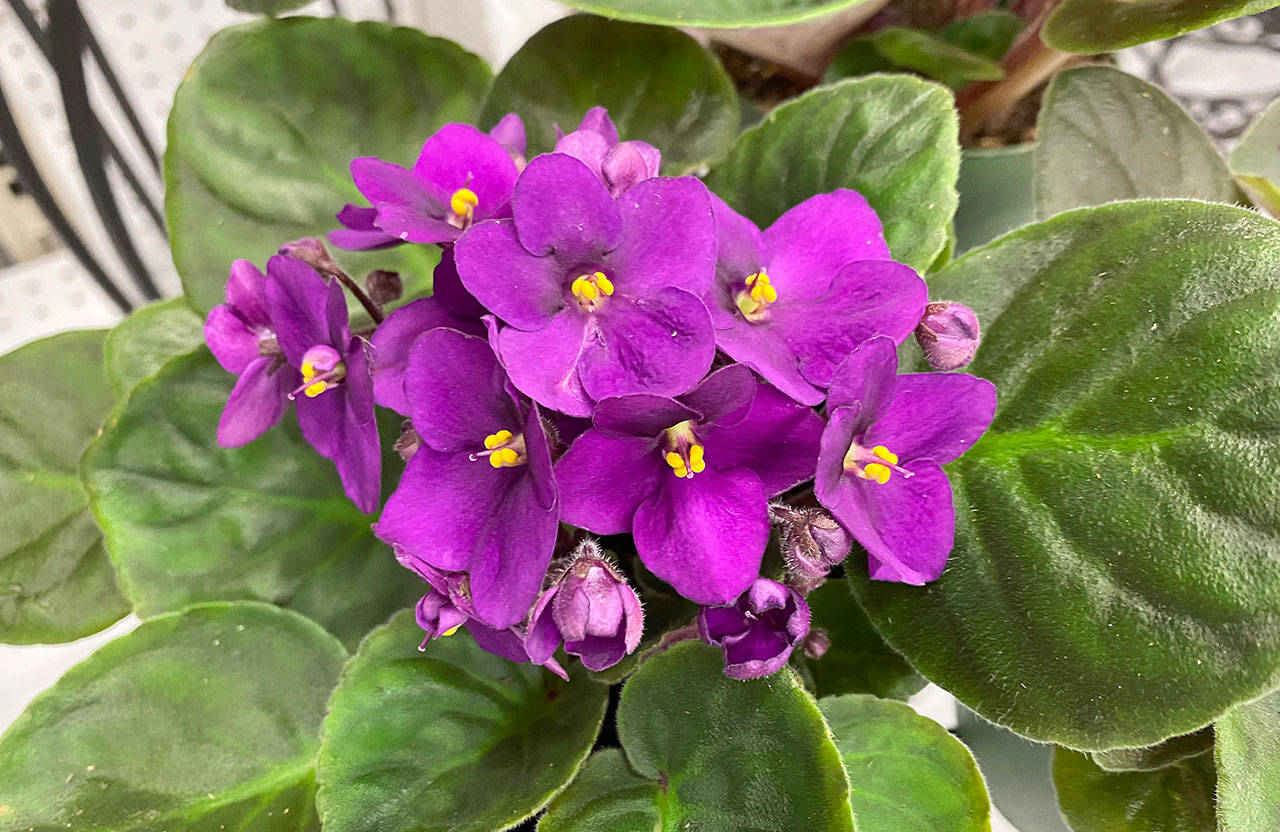African violets (genus Saintpaulia) are popular houseplants because of their compact structure and cheery blooms. Native to the rainforests of Tanzania and Kenya, African violets were first collected from the wild by European explorers (including Baron Walter von St. Paul for whom the genus is named) in the late 1800s.
African violets are relatively easy to grow if you recreate elements of their native environment indoors.
Here are a few tips:
African violets like diffuse, bright light (similar to the understory of the rainforest); they need at least 8 hours of light each day (and 8 hours of darkness) to bloom but do not like hot, direct sunlight. Place your African violet in an east (or north) facing window.
Turn pots regularly to keep the plants nicely shaped.
African violets like moderate temperatures. Their preferred daytime temperature is 72 degrees. Night temperatures can be cooler but should not fall below 60 degrees. In the winter, move your African violet away from the window if it gets too cold.
African violets have fine roots and need enough water to keep the soil moist, but not soggy. Too much water makes them susceptible to root and crown rot. Avoid cold water, softened water (which is high in salts) and chlorine. If your water is treated, let it stand overnight to let the chlorine evaporate.
To avoid wetting the leaves (which can cause brown spots), use a watering can with a long narrow spout or water the plant from the bottom by putting the pot in a saucer of water until the soil surface becomes wet. If you normally water from the bottom, occasionally switch to top watering to prevent the accumulation of crusty, white salts on the soil surface and edge of the pot.
The type of pot and growing conditions determine how often you need to water your African violet. Feel the soil surface to determine if it needs water.
If the soil sticks to your finger and feels damp, it doesn’t need water. If the soil crumbles away easily and doesn’t feel damp, it’s time to water again.
African violets like high humidity. To mimic rainforest conditions, put your African violet pot on a layer of pebbles in a saucer. Add water to the saucer so that most of the pebbles are just covered. The water will slowly evaporate, increasing the humidity around the plant.
African violets are not heavy feeders but benefit from routine applications of a balanced houseplant fertilizer (a fertilizer with similar amounts of nitrogen, phosphorus and potassium by weight). Many formulations are available. Use as directed on the label.
If you fertilize each time you water, reduce the amount of fertilizer to one-quarter the recommended strength. Decrease fertilizer applications in winter because plant growth slows in cooler temperatures and decreased light.
Groom your African violets when you water them. Brush off dirt, dust or other debris from the leaves (using a small artist’s paint brush); remove spent blossoms and damaged leaves. Always look for insects and other pests.
Re-pot your plants every 6-12 months. Increase the pot size gradually (only by about one inch in diameter each time you re-pot) to accommodate the growing root ball. Do not “over-pot” the plants (i.e., use a pot that is too big for the root ball). African violets need to be root-bound to bloom well.
When re-potting, you also can prune the roots of your African violet to limit plant (and pot) size. Remove the plant from its pot. Slice off the bottom of the root ball with a sharp knife and remove the lower leaves from the base of the plant (which will expose the neck of the plant).
Note: As African violets grow they often lose their bottom leaves and develop a bare neck without your assistance.
Then, return the plant to the same size pot. Add fresh soil, up to the pot rim, covering the exposed neck. The neck will produce new roots into the added soil.
Use a light and porous soil to allow the fragile roots to grow into the new medium such as a peat-based, “soil-less” mix consisting of at least 30 to 50 percent coarse vermiculite and/or perlite.
As the gray days of winter settle in, bring some cheer into your home with an African violet (or give them as gifts to brighten the lives of family members and neighbors).
In full bloom, African violets can chase those winter blues away.
Jeanette Stehr-Green is a WSU-certified Clallam County Master Gardener.


